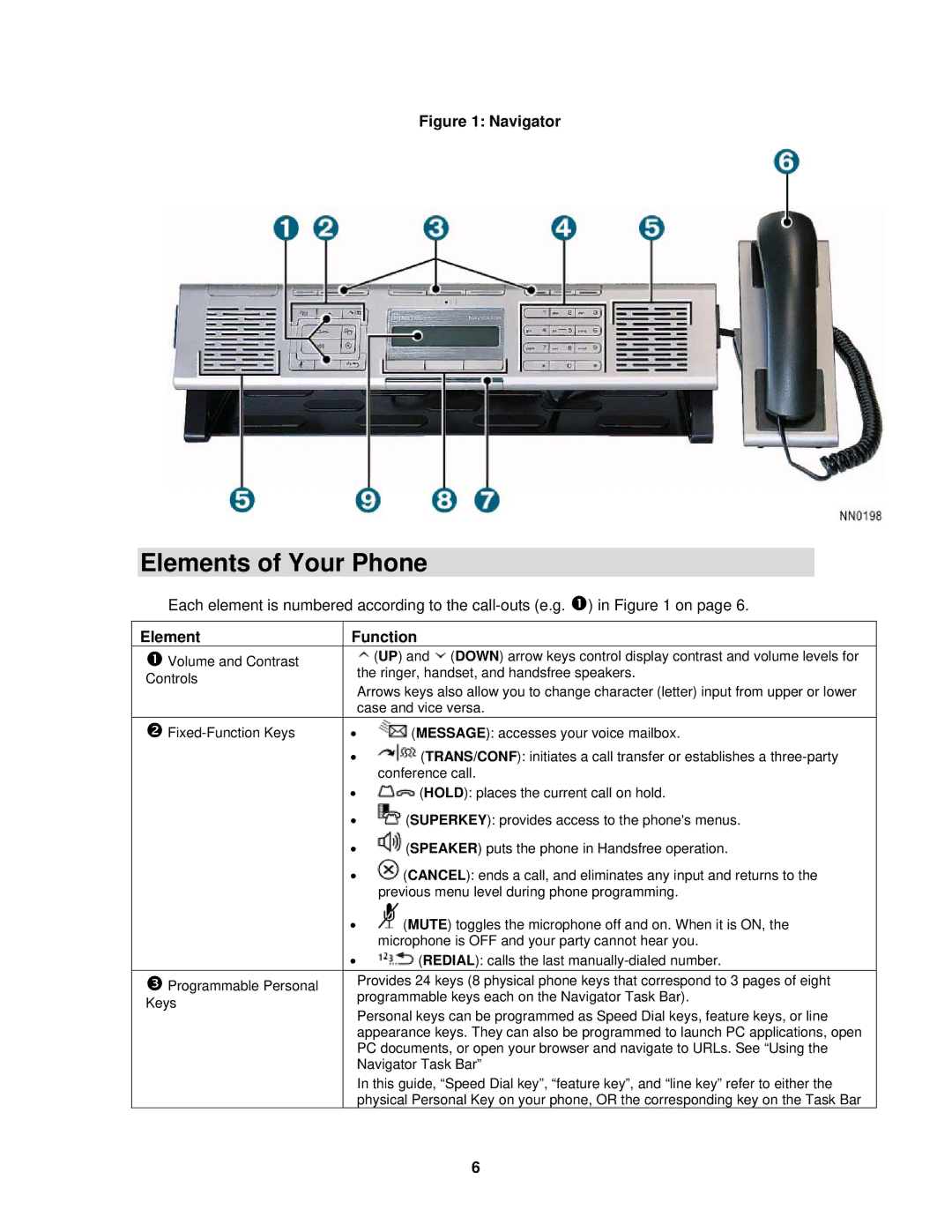
Figure 1: Navigator
Elements of Your Phone
Each element is numbered according to the
Element
Volume and Contrast Controls
Programmable Personal Keys
Function
![]() (UP) and
(UP) and ![]() (DOWN) arrow keys control display contrast and volume levels for the ringer, handset, and handsfree speakers.
(DOWN) arrow keys control display contrast and volume levels for the ringer, handset, and handsfree speakers.
Arrows keys also allow you to change character (letter) input from upper or lower case and vice versa.
•![]() (MESSAGE): accesses your voice mailbox.
(MESSAGE): accesses your voice mailbox.
•![]() (TRANS/CONF): initiates a call transfer or establishes a
(TRANS/CONF): initiates a call transfer or establishes a
•![]() (HOLD): places the current call on hold.
(HOLD): places the current call on hold.
•![]() (SUPERKEY): provides access to the phone's menus.
(SUPERKEY): provides access to the phone's menus.
•![]() (SPEAKER) puts the phone in Handsfree operation.
(SPEAKER) puts the phone in Handsfree operation.
•![]() (CANCEL): ends a call, and eliminates any input and returns to the previous menu level during phone programming.
(CANCEL): ends a call, and eliminates any input and returns to the previous menu level during phone programming.
•![]() (MUTE) toggles the microphone off and on. When it is ON, the microphone is OFF and your party cannot hear you.
(MUTE) toggles the microphone off and on. When it is ON, the microphone is OFF and your party cannot hear you.
•![]() (REDIAL): calls the last
(REDIAL): calls the last
Provides 24 keys (8 physical phone keys that correspond to 3 pages of eight programmable keys each on the Navigator Task Bar).
Personal keys can be programmed as Speed Dial keys, feature keys, or line appearance keys. They can also be programmed to launch PC applications, open PC documents, or open your browser and navigate to URLs. See “Using the Navigator Task Bar”
In this guide, “Speed Dial key”, “feature key”, and “line key” refer to either the physical Personal Key on your phone, OR the corresponding key on the Task Bar
6
